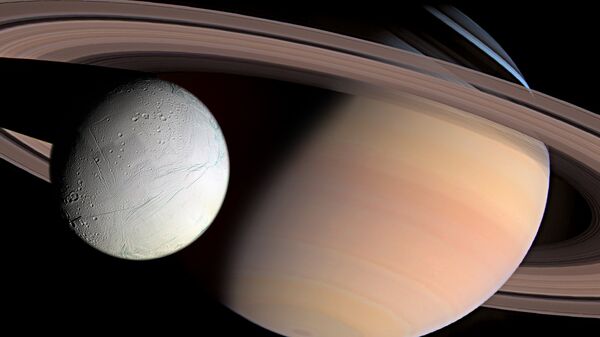New kinds of organic compounds have been discovered in plumes bursting from Saturn's moon Enceladus, in a major breakthrough for scientists, according to findings published 2 October in the Monthly Notices of the Royal Astronomical Society.
The compounds are the ingredients of amino acids, the building blocks of life, which explains why experts have hailed the findings as an "important piece of the puzzle" in the search for extraterrestrial life in our solar system.
The current discoveries are all part of a profound ongoing study of data from NASA's Cassini mission, which wrapped up in September 2017 when the spacecraft flew into Saturn's surface.

But before its demise, it flew through the plumes that burst out of Encaladus's surface, sending data about them back to Earth.
This treasure trove of information is now being sifted through by experts.
That plumes are ejected by powerful hydro-thermal vents, which spew material from the core of the moon.
That is subsequently mixed with water and thrown out into space as water vapour and ice grains.
The molecules were discovered in those ice grains, and were found to be nitrogen- and oxygen-bearing compounds.
Scientists used the spacecraft's Cosmic Dust Analyzer, or CDA, to determine the composition of organic material in the grains.
On our planet, these compounds are active in chemical reactions that can produce amino acids – a process that helped create all living things on Earth.
The vents on Enceladus could also be helping create amino acids, sparking hopes that life may be flourishing beneath the moon's surface.

"If the conditions are right, these molecules coming from the deep ocean of Enceladus could be on the same reaction pathway as we see here on Earth. We don't yet know if amino acids are needed for life beyond Earth, but finding the molecules that form amino acids is an important piece of the puzzle," said Nozair Khawaja, who led the research team of the Free University of Berlin.

Enceladus has been widely considered one of the best candidates for life in our solar system, as NASA announced in 2017 that its robotic space probe, dubbed Cassini, had discovered a precondition for the existence of lifeforms on the Saturnian moon.
The new discovery fuels excitement about the secrets its mysterious surface could be hiding.




